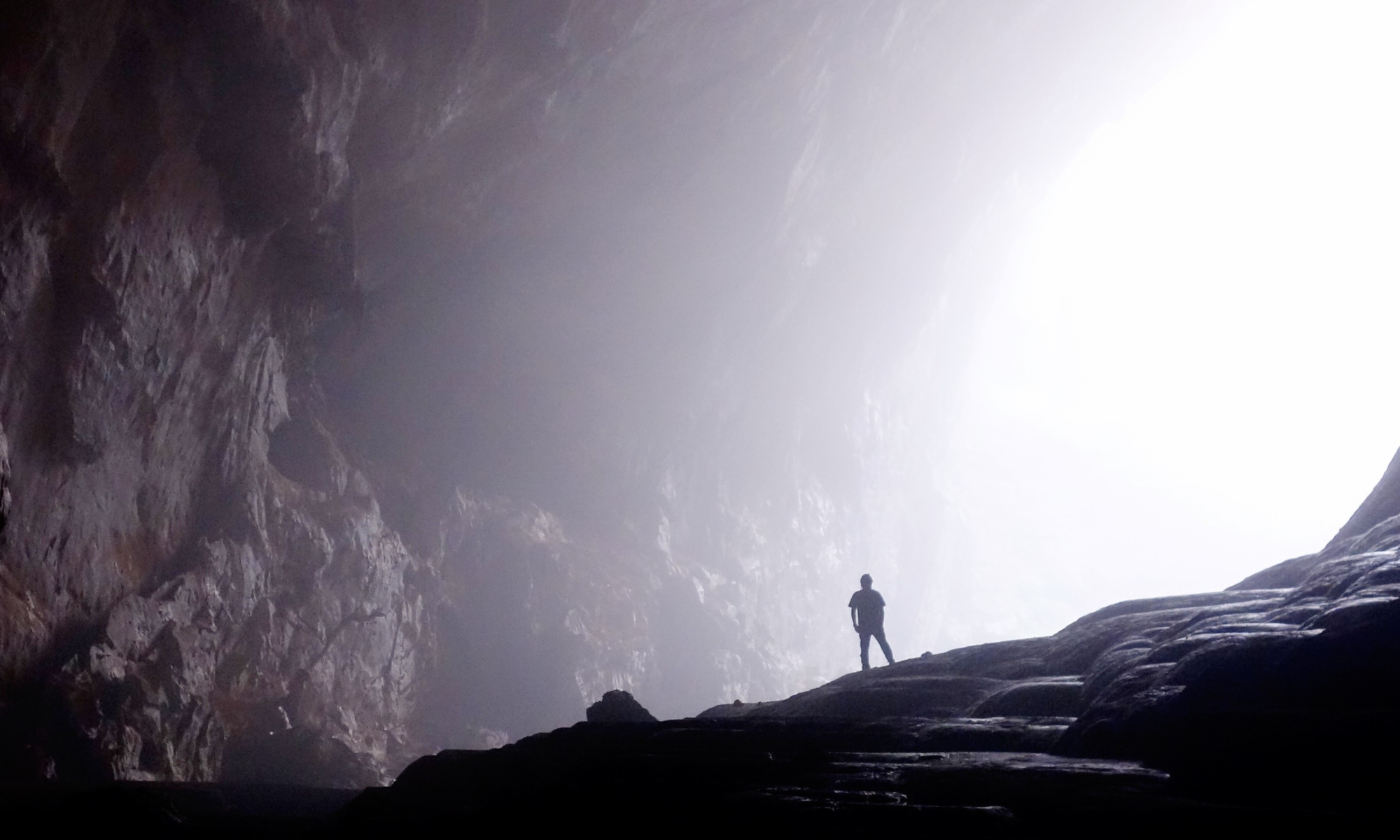Featured image: A person exploring the rocks of a cave on Earth, Pixabay.
Paper: Earth-like Habitable Environments in the Subsurface of Mars
Authors: J.D. Tarnas, J.F. Mustard, B. Sherwood Lollar, V. Stamenković, K.M. Cannon, J.-P. Lorand, T.C. Onstott, J.R. Michalski, O. Warr.
Mars exploration has been looking “up” recently: the Ingenuity helicopter performed the first powered flight on another planet, and veteran rover Curiosity gave us stunning images from the top of Mount Mercou. But if we want to look for life on Mars, it might be time for us to look down instead. New research suggests that life on present day Mars could be sustained by chemical energy produced through the interaction between water and rocks deep underground, like it is here on Earth.
The surface of Mars is an extremely inhospitable place for life. It is dry, cold, exposed to high levels of radiation, and lacks liquid water. The subsurface, however, is more sheltered. We know that life exists deep underground on Earth, powered not by sunlight, but instead by the radioactive decay of rocks in the presence of water. This is possible because some minerals undergo a process known as radioactive decay, which means they lose energy over time by emitting radiation. This radiation can power water radiolysis – the splitting of water into its constituent parts, hydrogen and oxygen – in the water found within the pore spaces of underground rocks. Microbes living in these depths can then use the resulting hydrogen directly as an energy source. If minerals containing sulfides (a particular chemical compound) are present within the rock, the oxygen produced by radiolysis can interact with those minerals to produce sulfate, which microbes can also use for energy.
To investigate whether such an energy source is plausible for life on Mars, Tarnas and colleagues had to consider the following factors: are there radioactive elements present within the rocks? Do the rocks have enough pore space to trap water? Are there sulfide minerals within the rocks? And at what rate could we expect bacteria to use the sulfate to perform life-sustaining chemical reactions? The team were able to use martian meteorites – rocks ejected from Mars that have landed on Earth, of which there are over 250 known examples – to get an idea of the composition of rocks on different parts of Mars. They were then able to combine this with gravitational data taken from spacecrafts in orbit around Mars to investigate the density of Martian rocks, and therefore, their expected pore space. They were able to estimate a rate for the chemical reactions in bacteria based upon what we know from bacteria deep underground on Earth. Finally, they were able to combine all this information into a model to predict whether underground rocks on Mars would have the potential to support life if they are in contact with groundwater.
Their results suggest that wherever subsurface groundwater exists on Mars, radiolysis of water alone could support a cell density of microbes similar to the density that we see deep in the subsurface of Earth. This finding is particularly interesting in light of recent evidence for a lake, or potentially lakes, beneath the south polar cap of Mars, as well as the potential for a past planet-wide groundwater system on Mars.
Tarnas et al. also point to particular places on Mars where sulfides are likely to be concentrated and therefore may be potential hotspots for microbial life. These include areas where submarine volcanism has occurred, as well as sites of past ultra-mafic (meaning low in silica content) lava flows. The Perseverance rover is currently looking for signs of ancient life on Mars, but this new study gives us an idea of promising locations to hunt for any life on Mars that might still exist today.
Could we therefore soon be looking at a new era of Mars exploration, one that takes us underground? We already know that huge caves probably exist on Mars, and many scientists have already argued that the subsurface of Mars should be an important focus for planetary exploration within the next decade. This new study only strengthens that case. Down we go?

The only way is… down? Groundwater on Mars could support microbial life in the present day by Eleni Ravanis is licensed under a Creative Commons Attribution-ShareAlike 4.0 International License.

